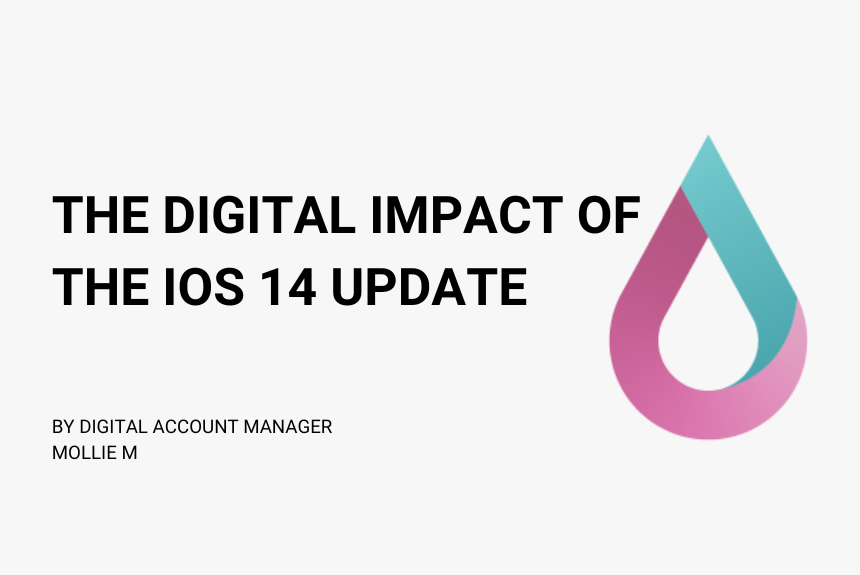Charity Digital Marketing: Don’t take your eye off the digital ball
“Successful fundraising has always been about effective testing and being able to adapt and adjust plans accordingly. Charity digital marketing is the perfect example of the need to be nimble to optimise fundraising campaigns.”
Take the controversial update that Apple made to its operating system last year, for instance. Apple released iOS 14.5, with new limits to the user information exchanged with mobile apps like Facebook, prohibiting specific data collection and sharing.
With nearly 48% of UK mobile users now running the Apple operating system, and 44% of the country using Facebook on a daily basis, this sent shockwaves through the fundraising sector. If we’re unable to collect the data insight we need to target our digital marketing campaigns, how will we be able to accurately reach prospective supporters?!
The fallout wasn’t as bad as we all predicted, however, and with a little adjustment, things seem to be back on track in the digital world.
So what exactly happened?
With the release of iOS 14.5 in April 2021, Apple introduced its App Tracking Transparency (ATT) framework, which requires apps to seek an explicit opt-in (permission) from users to have their activity tracked outside the platform.
Whilst popular with consumers, it has presented new challenges for digital marketers. It has affected target audiences, web ‘conversion events’ tracking (with a new limit of eight conversion events per domain), advertising mobile apps, and ad optimisation. In addition, real-time reporting is now delayed for up to three days.
Meta, parent company of Facebook and Instagram, responded first with criticism, and then with an adapted solution: Aggregated Event Measurement – a protocol that works with the existing Meta pixel (tracking code) and allows for measurement of web and app events from people using iOS 14.5 or higher in a way that is “consistent with consumers’ decisions about their data”. The aim being to protect the privacy of Facebook/Instagram users whilst also supporting marketers and businesses to operate successfully and continue using the platform.
What does this mean for charities?
Digital advertising results have become difficult to interpret, making campaign optimisation more of a challenge. Since many consumers haven’t opted in to be tracked, there is no longer accurate data to determine how well a campaign, ad set or ad is performing. It also means there is less data to work with to build ‘warm’ ad sets – audiences created with data to reach those people with a proven interest or history, such as retargeting people who have visited your website before.
Marketing ‘attribution’ – that is, being able to attribute a particular activity to having converted a lead, has also come more difficult, with the attribution window for conversion campaigns being reduced from 28-day ´click and view’ down to a mere 7-day ‘click’ and 1-day ‘view’ for all devices.
The good news for most fundraisers is that activity happening solely on Facebook or Instagram (a Facebook lead form ad, for example) is still 100% tracked and reported accurately – although be careful, link clicks back to websites are not.
Five steps charities can take to adapt their digital marketing
If you’ve been unaware of the changes or you’re not sure how best to react to what feels like a fait accompli, there are indeed ways of adapting your digital marketing. Here are five quick and easy first steps:
- Verify your charity’s domain on your Facebook Business account
- Tweak your strategy to operate within eight Meta pixel-tracking events
- Update reporting to 7-day clicks
- Optimise results such as cost per lead with a percentage strategy instead of number comparison
- Try to aim for in-app placements such as lead generation form campaigns, as opposed to a link back to your website
Having been given the choice, many consumers will have decided not to opt in to sharing their data. Therefore, it is vital that we focus on the data that we DO have to work with.
Let’s say you have two ad sets live in a campaign. One has an overall cost per lead of £2.45 and the other £3.70. Since not all leads can be tracked, we know that the actual cost per lead isn’t accurate. Yet we can clearly see is that one ad set is performing better than the other. The gap does not lie, so we must optimise results from this new perspective.
Given the new delays in receiving data, we also recommend working to a longer time frame for optimisation. For example, if an ad set has been live for four days and isn’t reaching expected results, wait for a minimum seven days to allow for results that may be delayed and are still pending.
Looking ahead
Overall, it’s clear that things aren’t as easy and smooth sailing as they once were, but the digital world is ever-evolving, as are we! We must learn to adapt, adjust, test and keep striving for success.
Our digital team at Purity is continually watching changes in this space, and we keep our charity clients up to date as and when things change so we’re always able to maximise their online fundraising.
Interested in learning more about our digital services? Feel free to email me with any queries at mollie@purityfundraising.com ; I look forward to hearing from you…
Written By, Mollie M


